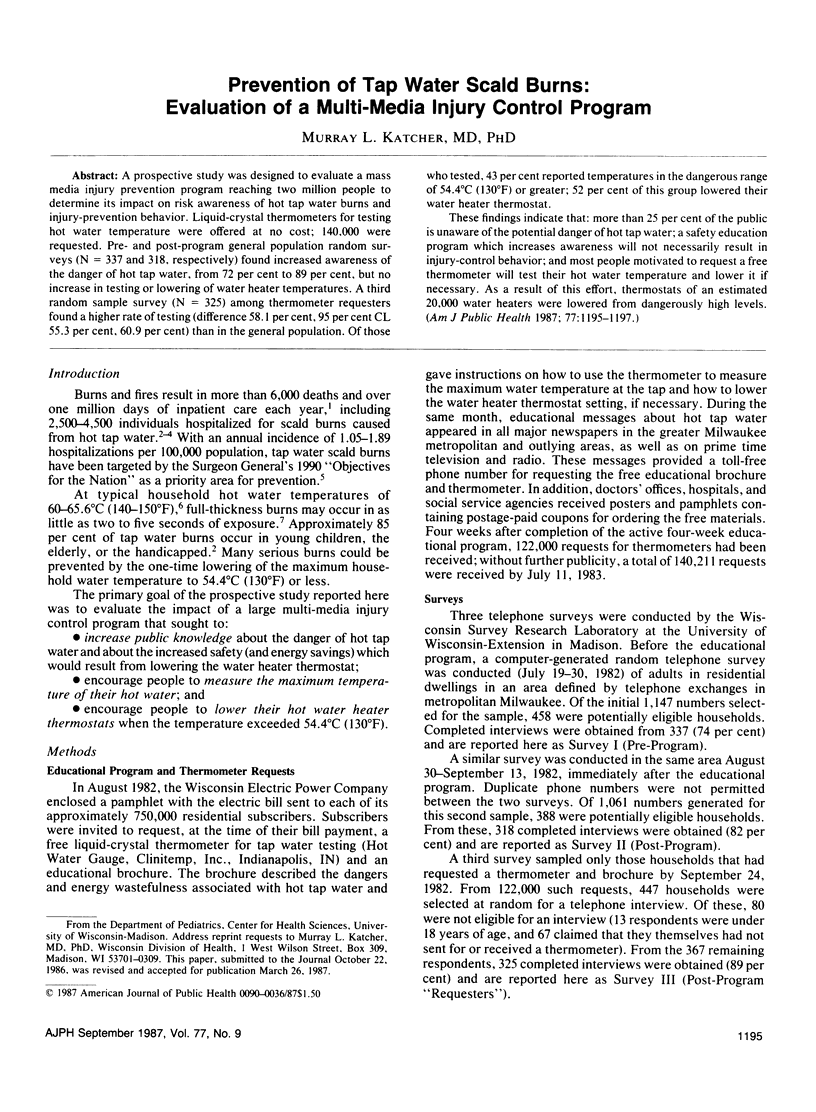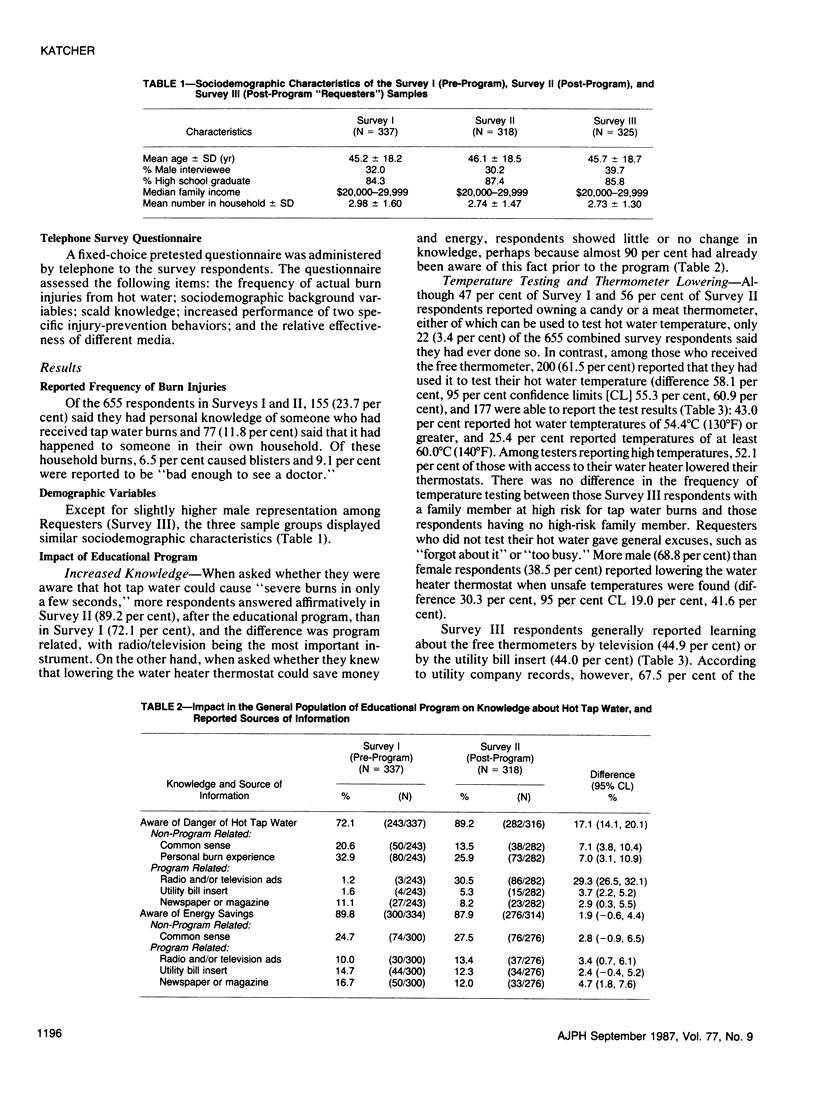Abstract
A prospective study was designed to evaluate a mass media injury prevention program reaching two million people to determine its impact on risk awareness of hot tap water burns and injury-prevention behavior. Liquid-crystal thermometers for testing hot water temperature were offered at no cost; 140,000 were requested. Pre- and post-program general population random surveys (N = 337 and 318, respectively) found increased awareness of the danger of hot tap water, from 72 per cent to 89 per cent, but no increase in testing or lowering of water heater temperatures. A third random sample survey (N = 325) among thermometer requesters found a higher rate of testing (difference 58.1 per cent, 95 per cent CL 55.3 per cent, 60.9 per cent) than in the general population. Of those who tested, 43 per cent reported temperatures in the dangerous range of 54.4 degrees C (130 degrees F) or greater; 52 per cent of this group lowered their water heater thermostat. These findings indicate that: more than 25 per cent of the public is unaware of the potential danger of hot tap water; a safety education program which increases awareness will not necessarily result in injury-control behavior; and most people motivated to request a free thermometer will test their hot water temperature and lower it if necessary. As a result of this effort, thermostats of an estimated 20,000 water heaters were lowered from dangerously high levels.
Full text
PDF


Selected References
These references are in PubMed. This may not be the complete list of references from this article.
- Allen D. B., Bergman A. B. Social learning approaches to health education: utilization of infant auto restraint devices. Pediatrics. 1976 Sep;58(3):323–328. [PubMed] [Google Scholar]
- Baptiste M. S., Feck G. Preventing tap water burns. Am J Public Health. 1980 Jul;70(7):727–729. doi: 10.2105/ajph.70.7.727. [DOI] [PMC free article] [PubMed] [Google Scholar]
- Dershewitz R. A. Will mothers use free household safety devices? Am J Dis Child. 1979 Jan;133(1):61–64. doi: 10.1001/archpedi.1979.02130010067011. [DOI] [PubMed] [Google Scholar]
- Feldman K. W., Schaller R. T., Feldman J. A., McMillon M. Tap water scald burns in children. Pediatrics. 1978 Jul;62(1):1–7. [PubMed] [Google Scholar]
- Gorman R. L., Charney E., Holtzman N. A., Roberts K. B. A successful city-wide smoke detector giveaway program. Pediatrics. 1985 Jan;75(1):14–18. [PubMed] [Google Scholar]
- Katcher M. L., Delventhal S. J. Burn injuries in Wisconsin: epidemiology and prevention. Wis Med J. 1982 Feb;81(2):25–28. [PubMed] [Google Scholar]
- Katcher M. L. Scald burns from hot tap water. JAMA. 1981 Sep 11;246(11):1219–1222. [PubMed] [Google Scholar]
- Moritz A. R., Henriques F. C. Studies of Thermal Injury: II. The Relative Importance of Time and Surface Temperature in the Causation of Cutaneous Burns. Am J Pathol. 1947 Sep;23(5):695–720. [PMC free article] [PubMed] [Google Scholar]
- Reisinger K. S., Williams A. F. Evaluation of programs designed to increase the protection of infants in cars. Pediatrics. 1978 Sep;62(3):280–287. [PubMed] [Google Scholar]


